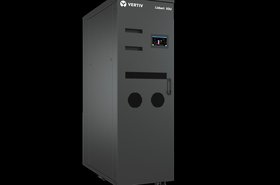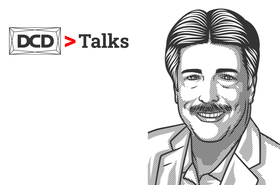Compared to other sectors of the data center industry, colocation data center providers (colos) have been more aggressive in making sustainability pledges.
Years ago, colos moved at a more measured pace when it came to embracing new initiatives and solutions that contribute to sustainability goals like carbon- and water-free operations, but that all changed once the Covid-19 pandemic arrived.
Before the pandemic, the primary focus for colos was finding ways to increase the speed of deployment while lowering the costs of construction.
Utilization and efficiency were important, but the market grew so fast that adopting new technology was not always an option. The pandemic-related construction delays allowed colos to focus on ESG initiatives that included efficiency, sustainability diversity, equity and inclusion, safety and corporate ethics.
Today, more colos are evaluating new technology such as liquid cooling or water-free cooling systems, as well as sustainable power architectures, to help them meet the sustainability pledges set by the major hyperscalers ‒ the highest-profile examples of which are Google’s goal of becoming carbon-free and Microsoft’s aim to be carbon-negative and water-positive by 2030.
In terms of contributing to a more sustainable future, these types of pledges could lead to significant changes for colos in the coming years.
Benefits and opportunities for sustainable colos
According to reports, the global colocation data center market is expected to reach $131.8 billion by 2030, at a CAGR of 14.2 percent between 2022 and 2030.
The speed, reliability, availability and costs associated with building and deploying colocation data centers have made them increasingly attractive to hyperscalers during a time of unprecedented growth that has been magnified by the pandemic and our increasing reliance on technology to sustain our digital lifestyles.
Additionally, increased reliance on colocation is the easiest and most cost-effective way to eliminate data center-related emissions for some enterprises, if colos can provide more carbon-neutral environments.
As colos vie for the attention and business of companies like Alibaba, Microsoft and Amazon, it may benefit colos to incorporate solutions and strategies that contribute to and align with sustainability goals of these major hyperscalers.
Vertiv recently launched its Data Center Guide to Sustainability, which offers best practices and business cases for reducing environmental impact and emerging technologies to help organizations work toward net-zero operations.
Innovations with potential for reducing environmental impact
In recent years, critical infrastructure equipment providers have introduced several innovations designed to help colos increase asset utilization, maximize efficiency and reduce emissions and water consumption.
Below is an overview of some of those technologies, according to the guide:
Water and energy-efficient thermal management
When considering adopting new, more efficient forms of technology, the geographic region plays just as important a role as return on investment (ROI). In thermal management, that can mean understanding the costs and availability of water in a particular area.
In parts of the world where water availability is limited or customers have established a goal of zero water use as part of their sustainability efforts, water-free direct expansion (DX) systems can be used.
DX free-cooling systems nearly deliver the energy efficiency of indirect evaporative systems while simultaneously eliminating the need for millions of gallons of water to utilize such systems.
In areas where water is more widely available, an alternative option is a chilled water free-cooling system, which helps data centers achieve a balance between water utilization and energy efficiency.
Liquid cooling
The proliferation of artificial intelligence, machine learning, high-quality streaming and other processing-intensive business applications requires more data centers to support IT equipment racks with densities of 30 kilowatts or higher.
As this trend inevitably continues, it will become more difficult to optimize efficiency for these applications using traditional air-cooling technology.
Innovations in liquid cooling technology, whether rear-door heat exchangers, direct-to-chip or immersion cooling, can help improve the performance and reliability of high-density racks by mitigating thermal throttling of central processing unit (CPU) clock speeds while potentially lowering data center energy costs, compared to using air cooling for the same high-density racks.
Alternative energy storage
As they become more cost-competitive than traditional valve-regulated lead-acid batteries (VRLA), alternative energy storage options like Lithium-ion batteries (Li-ion) have become an increasingly popular option for both short- and long-term backup power in data centers.
While the transition to Li-ion is not entirely driven by sustainability, the longer life provided by these batteries can lead to improved reliability and fewer battery replacements, which can reduce a colo’s e-waste.
Li-ion can also help play a role in the transition to renewable energy. For instance, when paired with UPS systems with dynamic grid support capabilities, they provide enough flexibility to participate in grid services which enable operators to realize incremental revenue from stored sustainable utility sources or on-site power generation.
Intelligent power management
Colos are using new forms of intelligent equipment and controls to improve the utilization and efficiency of the critical power systems required to achieve high levels of availability.
A UPS system’s efficiency is being enhanced through more sophisticated implementations of ‘eco mode’ operation.
An example of eco mode operation is a double-conversion UPS system that operates in bypass mode when the utility is delivering acceptable power, eliminating the energy required to condition power, and switches to double-conversion mode when power quality degrades.
A new approach to eco mode is Dynamic Online Mode, which keeps the output inverter active but delivers no power while the UPS is in bypass.
This helps enable the efficiency of eco mode while minimizing risks related to switching between bypass and double-conversion modes. It also filters and power factor corrects the bypass source, eliminating one of the major problems with more traditional eco modes.
Renewable energy
Harnessing renewable energy can greatly help an organization looking to reduce its carbon footprint. Colos are looking at opportunities to power data centers through locally generated renewable power by matching renewable energy sources with fuel cells, systems that can produce clean hydrogen from renewable energy and UPS systems with dynamic grid support capabilities.
The path toward carbon-free operation begins with colos consuming 100 percent renewable energy. From there, an organization should eliminate any remaining sources of carbon.
Operators need to find a way to eliminate diesel and only operate on locally sourced renewable fuel sources. During this time, operators should also aim to increase utilization rates while taking measure to reduce their electricity consumption.
Colos in the beginning stages of planning long-term efficiency and sustainability goals may find the initial steps of the journey to be daunting, but taking steps such as these can bring meaningful change to our industry — and our planet.
For organizations looking for a baseline primer of goals, frameworks and opportunities when it comes to sustainability in the data center, click here. To read Vertiv’s Guide to Data Center Sustainability in its entirety, click here.
More from Vertiv
-

Vertiv brings XDU liquid cooling system to Europe
Launched in the US in 2019
-

Sponsored Evolving customer needs require evolving operations
A future-ready data center requires tighter focus on internal operations and evolving customer needs
-

Sponsored A chilled approach to sustainability
How chilled water cooling can play a part in unlocking sustainable data center growth


